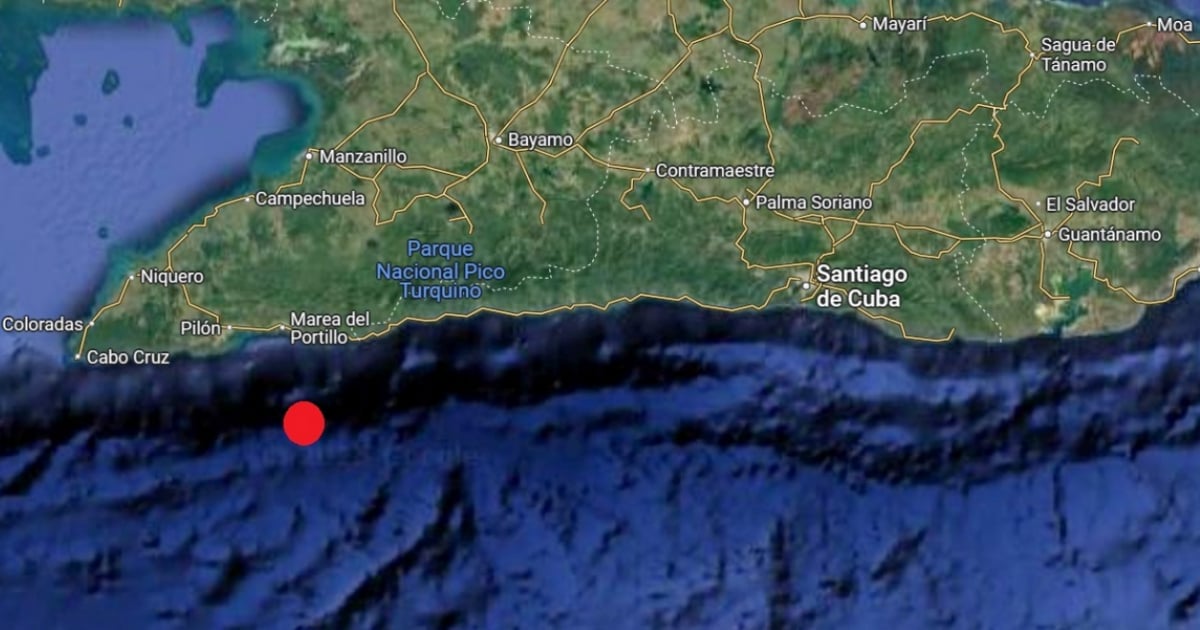Enrique Diego Arango Arias, head of the Cuban National Seismological Service, announced that a noticeable earthquake was detected by the nation's seismological network at 12:24 a.m. on February 25. The earthquake registered a magnitude of 3.3 and occurred at a depth of 10 kilometers. The epicenter was located 24 kilometers from the municipality of Bartolomé Masó and 37 kilometers southeast of the town of Pilón, both situated in the Granma province. According to the data, the quake was positioned at coordinates 19.67° north latitude and -77.14° west longitude.
Reports from the towns of Marea de Portillo and Bartolomé Masó indicated that the tremor was felt there. Additionally, residents from the Granma municipalities of Media Luna, Campechuela, and Pilón also reported experiencing the quake. The official statement from CENAIS confirmed that no material damage or loss of life occurred due to this mild seismic event.
In a subsequent announcement, Arango Arias informed about a 5.4 magnitude earthquake that struck northeast of the Dominican Republic at 1:48 a.m. the same day. This event was recorded at a depth of 19.1 kilometers, as confirmed by the United States Geological Survey (USGS).
Seismic Risk in Cuba: A Call for Preparedness Not Panic
Recently, Enrique Diego Arango Arias addressed concerns over potential major earthquakes in the Caribbean, which could impact Cuba. In a Facebook post, he clarified that while certain areas with significant geological faults could generate substantial earthquakes, predicting such events in the short term without concrete data is not feasible.
"A major earthquake could occur in places like the Dominican Republic, Cuba, Japan, and California, where there are faults with accumulated energy. However, predicting such an event in the short term without evidence is difficult. Raising awareness is necessary but should be done without alarmism or sensationalism," Arango Arias stated on Facebook.
This response came after a Dominican news outlet, Diario Libre, published an article titled "Seismological Director Warns of Imminent Major Earthquake," causing unease among Cubans. Arango Arias emphasized the importance of maintaining preparedness measures to mitigate seismic risks and highlighted the significance of establishing seismic hazard estimates in construction codes.
The expert's clarification aimed to prevent the spread of alarmist information that could lead to public panic. The memories of the November 10 earthquakes, with magnitudes of 6 and 6.7, are still fresh, having injured ten people and damaged at least 3,752 buildings in southeastern Cuba. Since then, 9,637 aftershocks have been recorded, with 141 deemed likely noticeable.
Regarding the 6.1 magnitude earthquake on December 23, 2024, which was felt across eastern Cuba, 573 aftershocks have been detected, with only three perceived by the public, as outlined in the latest CENAIS report.
Cuba's Seismic Activity and Preparedness
What was the magnitude of the recent earthquake near Granma?
The recent earthquake near Granma had a magnitude of 3.3.
Did the earthquake cause any damage or casualties?
No material damage or loss of life was reported as a result of the earthquake.
What measures does Cuba have in place for seismic preparedness?
Cuba establishes seismic hazard estimates in construction codes and emphasizes maintaining preparedness to reduce risks associated with earthquakes.
